In the weeks following the release of James Cameron’s Avatar in 2009, a strange phenomenon was reported: Post-Avatar Depression Syndrome (PADS). It was, essentially, a deep feeling of longing and disappointment that the fictional world of Pandora was not real, and a struggle to cope with the non-magical nature of the real world. Cameron’s vision of an alien planet populated by beautiful blue beings was so strong that hundreds (if not thousands) of people claimed to feel depressed and unsatisfied after their viewing experience was over. Avatar: Frontiers of Pandora might be the answer to those still feeling the impact of PADS.
In this Ubisoft-developed open-world game, you are a young Na’vi who has grown up without being part of their established culture, cut off from their home and subject to human re-education. After an Avatar named Jake Sully – subject of the Avatar film series – initiates an uprising, you are forced into cryostasis, and awaken much later into a new world where humans and Na’vi live in opposition.
You must make your own way into the world, slowly discovering your cultural birthrights, harnessing new abilities, learning to wield new weapons, and fighting against your captors. In a word, it’s the perfect setup for those looking to entrench themselves in Pandoran lore, with each chapter of this game providing ample opportunity to explore stunning alien landscapes, and learn more about James Cameron’s sweeping world.
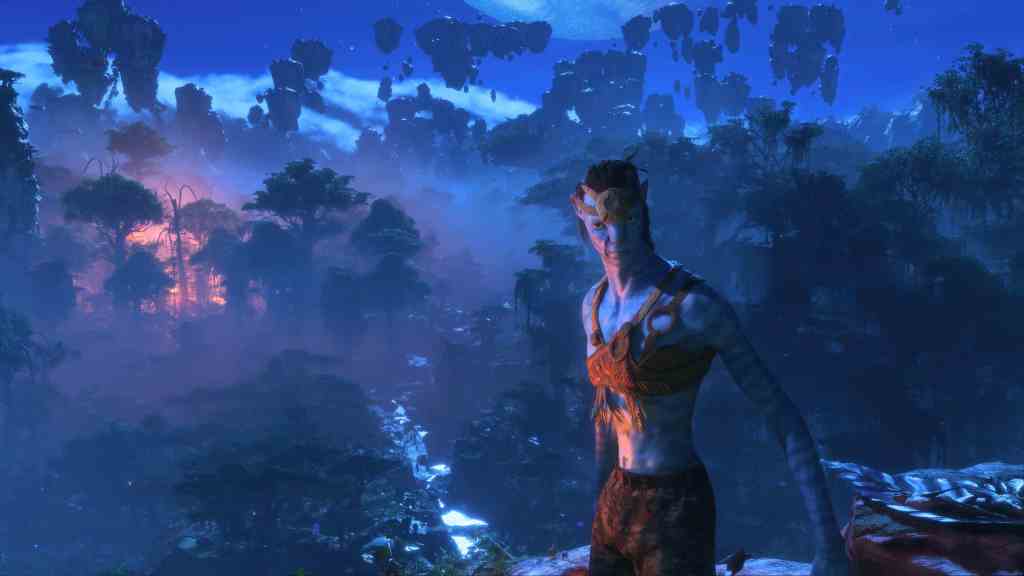
If you’ve played Ubisoft’s games in the past, you may find the quest log and overall format familiar – but Frontiers of Pandora does a lot to wriggle away from feeling formulaic, with clever tweaks and a genuinely brilliant open world helping the game to maintain its novelty.
The most obvious tweak is in the game’s minimalist approach to mission direction. Rather than point players directly to their next task – defeat an RDA base, explore a mysterious forest, climb through a tall rookery – the game’s directives tend to be more flowery and descriptive. While guided mode will provide exact locations for those struggling, there is also an exploration-based mode that encourages player interpretation.
You can expect directives in the vein of “go find this person” to be more like “this person was last seen by a river, and the river has an encampment nearby” or “this location is hidden behind a purple tree.” It’s a lovely approach that feels unique in a world where games so often point you exactly where you need to go. While it can occasionally be frustrating when you wind up wandering in circles, it’s also an opportunity to explore more of Pandora, and to experience a world that’s so clearly crafted with love and admiration.
Off the beaten path, you’ll often find the most beautiful sights. On a personal quest to discover more Na’vi Ancestor Abilities, after failing an RDA base skirmish one too many times, I stumbled upon a cave filled with pulsing neon plants. Landing on an island far above the earth, I discovered a series of floating stepping stones backlit by a moonlit night. Even hunting for a particular plant on the ground, I found myself surrounded by life. Plants that move and attack, or breathe with the flow of air. I found wild creatures hiding out by hollow trees. Everywhere I looked, there was colour and movement.
That’s another part of what makes Frontiers of Pandora feel so unique: its approach to colourful, genuinely stunning world design. I mentioned this in my early preview, but it’s worth mentioning again: Frontiers of Pandora is beautiful in a way that highlights the beige-ness of other recent open worlds. It’s eye-popping in parts, with so much natural beauty in every facet. It’s a game that begs the question: why aren’t more open worlds like this? When will we move away from sparse desert biomes?
For hours, I found myself ignoring the main quest line in favour of taking on a photo journal of sorts, seeking out the most impressive sights to photograph.
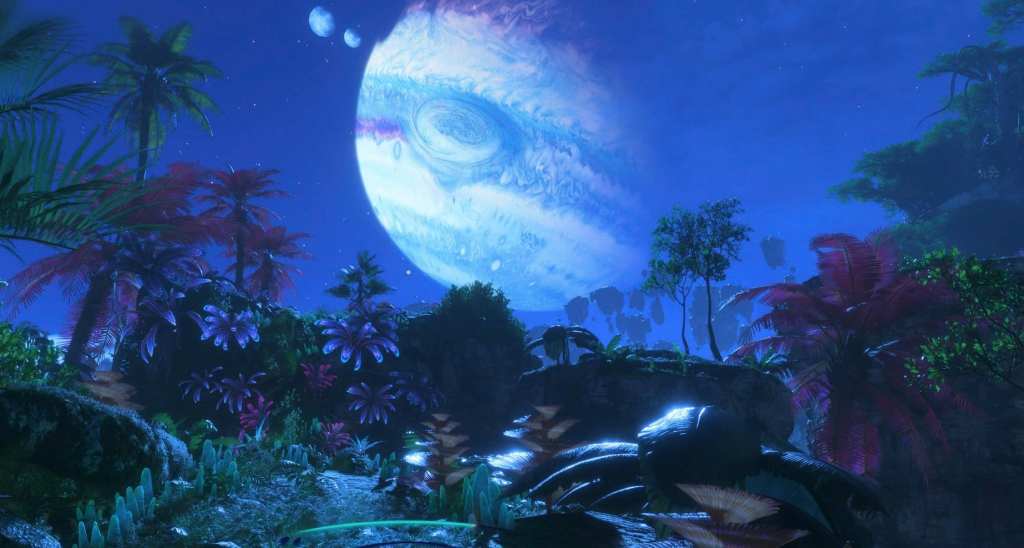
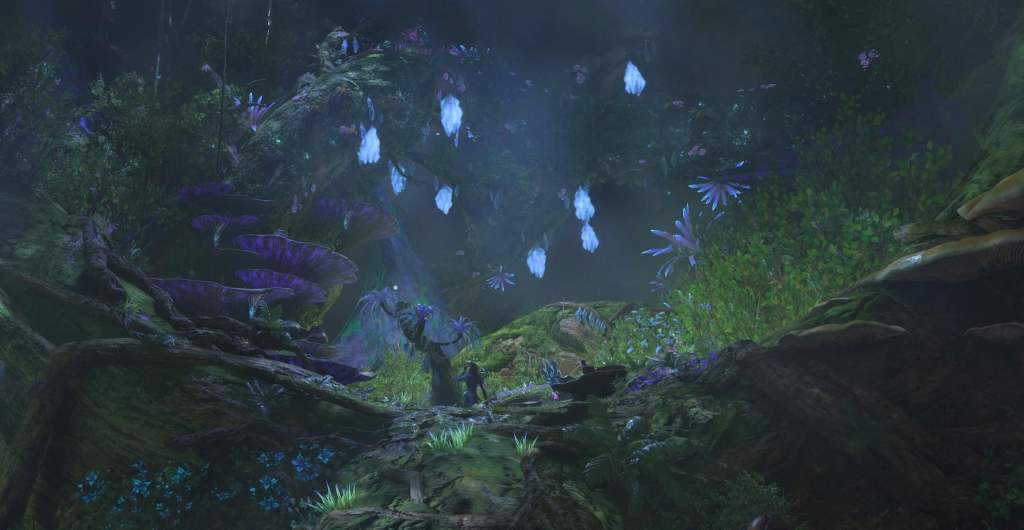
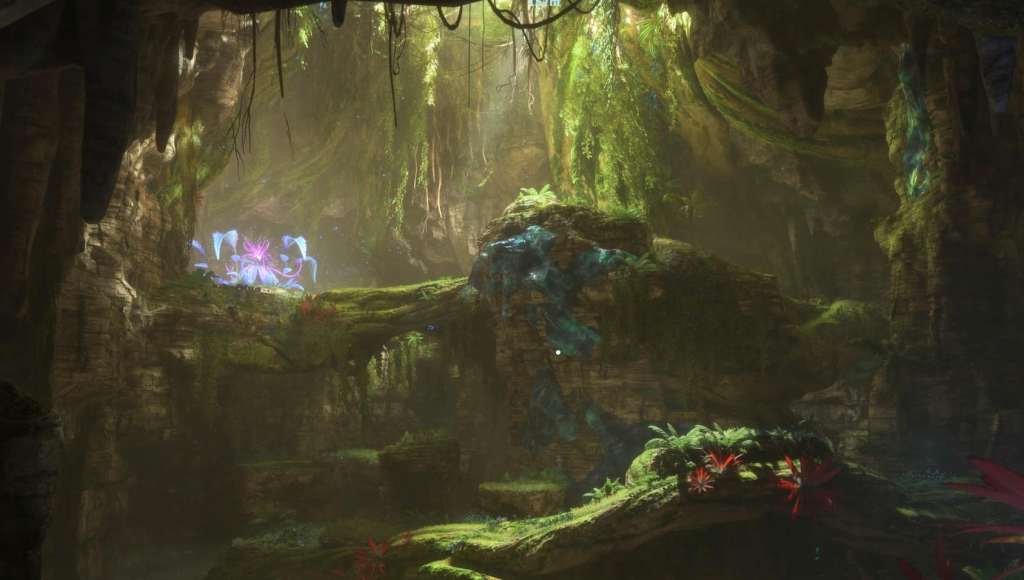
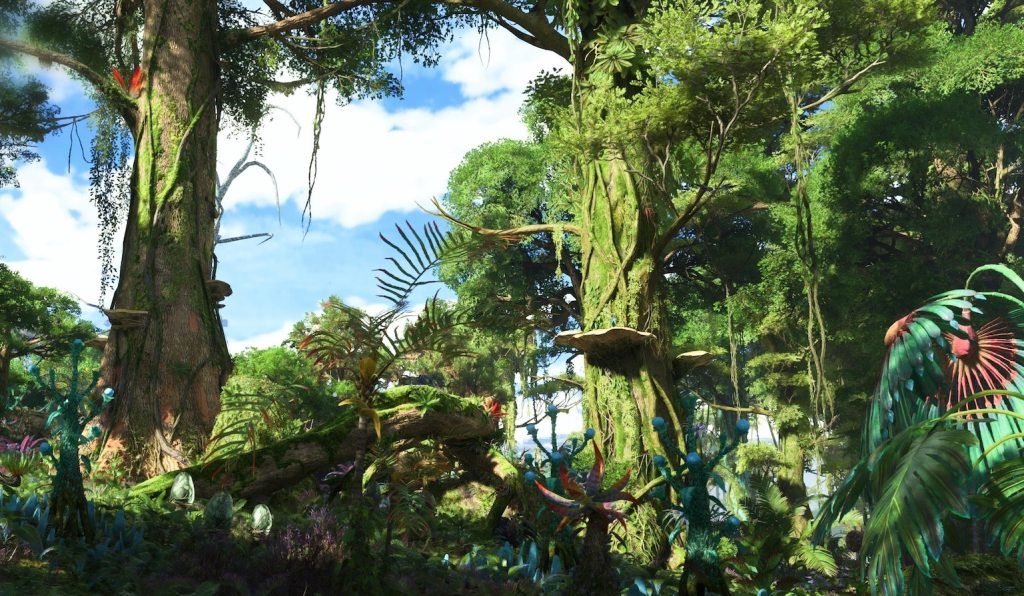
Taking to the skies on my Ikran companion (named Floof), there was even more to discover, with the game’s sense of freedom amped up by the ability to explore freely on land or by air. This allows a whole new perspective on worldly sights, and the transition between land and air works seamlessly – which I specifically mention as it did not do so in my early preview of the game.
When I first entered Frontiers of Pandora a month before release, I had a novel problem that diving from the sky to the earth would split the ground beneath me, and I would fall through the game’s surface. This issue has been corrected, with Frontiers of Pandora performing smoothly throughout my time with it. In fact, there were no notable bugs at all in my playthrough, which was a welcome relief after encountering so many in the preview. Ubisoft has spit-shined this game well, with a real polish that makes it a wholly enjoyable and absolutely beautiful experience in nearly every aspect.
Where its shine is somewhat dulled is in its approach to formulaic storytelling and combat, both of which are fairly unsurprising. In the course of your adventures as a Na’vi, you’ll experience a fairly linear narrative with themes that feel rote – it’s a game about gathering a community, reconnecting with your roots, and fighting back against oppression. That’s not necessarily a bad thing, as Frontiers of Pandora excels in other ways, but in a world with such extravagance, its narrative is rendered unmemorable.
Equally so for its combat, which doesn’t quite harness the true potential of Na’vi prowess. While you can gather special Na’vi weaponry and wield this to great effect, attacking from land or via the sky, many of the game’s major skirmishes are best dealt with by machine guns.
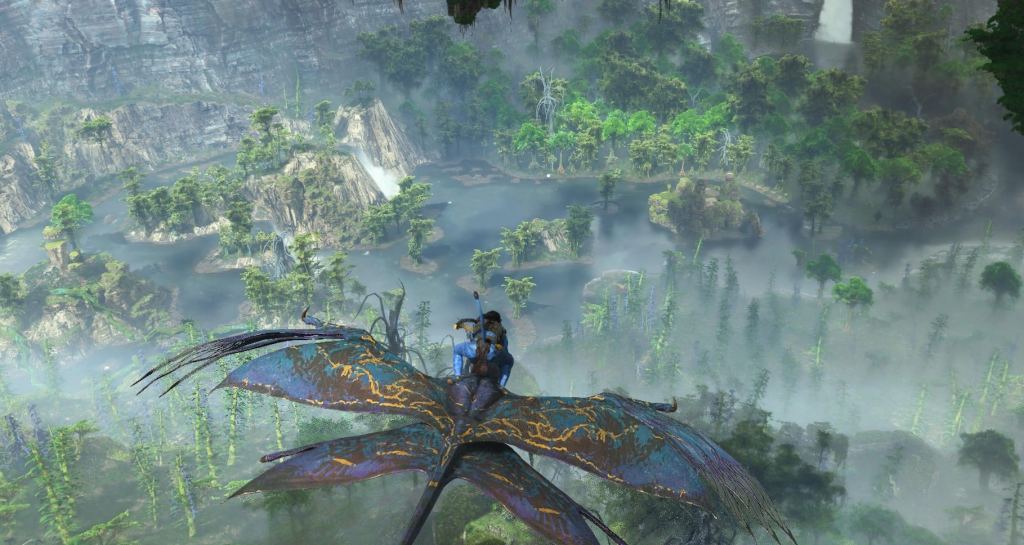
There is a lean into stealth in the game’s main missions – and this stealth is wonderfully complex, and usually requires multiple attempts and tactical thinking to overcome – but much of the action does eventually devolve into gunfights against humans in exoskeletons, which you can find in other games. It’s fairly difficult to win fights with Na’vi bows alone, so you’ll often resort to human weapons, making combat feel slightly generic and more akin to Far Cry, at times.
That said, there is a fair balance between these combat skirmishes and wider exploration, with the opportunity to wander freely, hunting for new skills, and completing side quests allowing you to spread out the feelings of sameness and familiarity inspired by RDA base skirmishes.
Allow yourself to wander off these tracks and into the further reaches of Frontiers of Pandora, and you’ll find an adventurous and ambitious open-world game that mostly realises its potential, while expanding the beloved world of James Cameron’s Avatar.
Ubisoft has made safe choices in its overall design, yet on the strength of its world design and exploration mechanics, Frontiers is able to shine as a sweeping, standalone adventure. For anyone longing to return to the world of Pandora, this adaptation is a wonderful salve to those clinically-recognised feelings.
Four stars: ★★★★
Avatar: Frontiers of Pandora
Platforms: PC, PlayStation 5, Xbox Series X/S
Developer: Massive Entertainment
Publisher: Ubisoft
Release Date: 7 December 2023
A PlayStation 5 copy of Avatar: Frontiers of Pandora was provided and played for the purposes of this review. GamesHub reviews are rated on a 5-point scale. GamesHub has affiliate partnerships. These do not influence editorial content. GamesHub may earn a small percentage of commission for products purchased via affiliate links.




